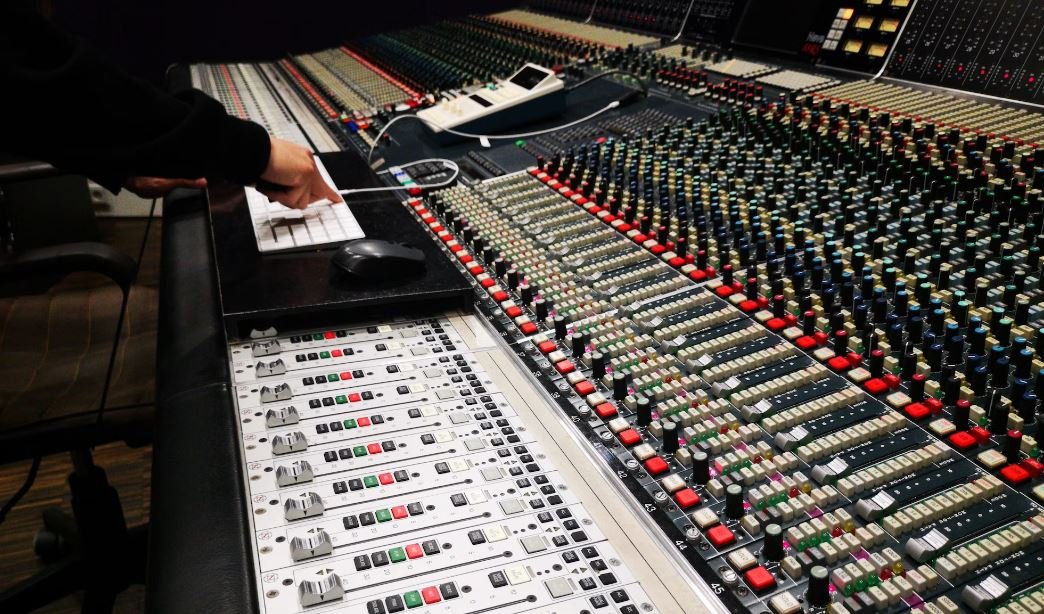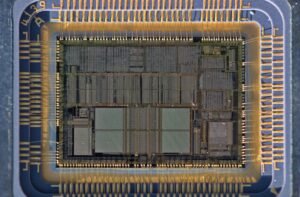GPT or MBR for SSD
The choice between using the GPT (GUID Partition Table) or MBR (Master Boot Record) partitioning scheme for SSDs (Solid State Drives) is an important consideration during the setup of your storage device. Each partitioning scheme has its own advantages and limitations. To make an informed decision, it is crucial to understand the differences between GPT and MBR and their impact on SSD performance and compatibility.
Key Takeaways
- GPT and MBR are partitioning schemes used on SSDs.
- GPT supports larger storage capacities than MBR.
- GPT is required for systems with UEFI firmware.
- MBR is compatible with older systems and legacy BIOS.
- Both GPT and MBR have their own advantages and limitations.
GPT (GUID Partition Table)
GPT is the newer partitioning scheme developed as a replacement for the traditional MBR. It is designed to address the limitations of MBR and provides several advantages for SSDs. One interesting feature of GPT is its ability to support significantly larger storage capacities, making it suitable for modern high-capacity SSDs.
With GPT, each partition on the SSD is assigned a unique GUID (Globally Unique Identifier), which eliminates the 4 primary partition limit of MBR. This means that you can create more primary partitions as needed. Additionally, GPT stores multiple copies of the partition table throughout the drive, enhancing its reliability.
MBR (Master Boot Record)
MBR is the older partitioning scheme that has been widely used for many years. It relies on a traditional Master Boot Record to store the partition table. While MBR has limitations in terms of storage capacity and partition count, it is compatible with older systems and legacy BIOS, making it a viable option for those who may be using older hardware.
One interesting thing about MBR is that its boot code can fit in a single 512-byte sector, which enables it to handle the boot process for a storage device. However, MBR’s main limitation is its maximum storage capacity support of 2 terabytes (TB) and the restriction of only supporting up to 4 primary partitions.
GPT vs. MBR: The Pros and Cons
Let’s compare the advantages and limitations of GPT and MBR in the following table:
| GPT | MBR | |
|---|---|---|
| Advantages |
|
|
| Limitations |
|
|
Conclusion
Choosing between GPT and MBR for your SSD depends on various factors, including your system’s firmware, storage capacity needs, and compatibility requirements. Consider the advantages and limitations of each partitioning scheme before deciding which one is best for your specific use case.

Common Misconceptions
Misconception 1: GPT is only required for large capacity SSDs
One common misconception is that GUID Partition Table (GPT) is only necessary when using larger capacity Solid State Drives (SSDs) and that Master Boot Record (MBR) works just fine for smaller SSDs. However, this is not true. Both GPT and MBR support SSDs of any size, but there are certain advantages to using GPT with SSDs regardless of their capacity:
- GPT allows for more than 4 primary partitions, which can be useful for multi-boot systems or users who need to create multiple partitions for various purposes.
- GPT provides a more reliable and robust system for data storage and recovery, as it includes redundant backup copies of important data structures.
- GPT supports larger partition sizes, making it ideal for SSDs with higher capacities.
Misconception 2: MBR is faster than GPT for SSDs
Another misconception is that MBR provides better performance and is faster than GPT for SSDs. While it is true that MBR has less overhead and may have a slight advantage in boot times, the performance difference between the two partitioning schemes is negligible on modern SSDs. In fact, GPT offers several advantages that can improve overall performance:
- GPT allows for larger partition sizes, enabling more efficient use of storage space and reducing the need for multiple partitions.
- SSDs with GPT partitioning can take full advantage of advanced features like Trim, which helps maintain SSD performance over time.
- GPT is more resistant to data corruption and offers better error detection and recovery mechanisms, providing a more reliable storage system.
Misconception 3: MBR is more compatible with older operating systems
Some people mistakenly believe that MBR is the only partitioning scheme compatible with older operating systems, leading them to choose MBR for SSDs when using legacy software. However, many older operating systems, such as Windows XP and newer Linux distributions, have BIOS and UEFI firmware support for GPT. Moreover, most modern systems come with UEFI firmware, which fully supports GPT. If compatibility with older systems is a concern, hybrid partitioning schemes that combine GPT and MBR can be used:
- Hybrid partitioning schemes allow for compatibility with both newer UEFI systems and older BIOS-based systems.
- GPT protective MBR maintains compatibility with MBR-based tools and utilities.
- MBR can be used as a fallback option when booting into older operating systems.
Conclusion
In conclusion, it is important to dispel these common misconceptions about using GPT or MBR for SSDs. Both partitioning schemes can work well with SSDs of any size, and the choice should be based on the specific needs and preferences of the user. GPT offers advantages such as support for larger partitions, increased reliability, and more flexibility, while MBR retains compatibility with some older systems and has slightly lower overhead. It is crucial to consider the benefits and limitations of each scheme and make an informed decision based on the requirements of the system and the software being used.

Introduction: The choice between GPT (GUID Partition Table) and MBR (Master Boot Record) has significant implications for SSDs (Solid State Drives). In this article, we explore various aspects of these partitioning schemes and their impact on SSD performance and functionality. The following tables present factual information to help you make an informed decision when selecting between GPT and MBR for your SSD.
Table 1: Maximum Partition Size
This table outlines the maximum partition size supported by each partition style.
Partition Style | Maximum Partition Size
———— | ————-
GPT | 9.4 ZB (zettabytes)
MBR | 2 TB (terabytes)
Table 2: Boot Compatibility
This table compares the boot compatibility of GPT and MBR partition styles.
Partition Style | Boot Compatibility
———— | ————-
GPT | Compatible with modern UEFI-based systems and BIOS
MBR | Compatible with traditional BIOS-based systems
Table 3: Protection Against Disk Corruption
Here, we examine how GPT and MBR protect against disk corruption.
Partition Style | Protection Against Disk Corruption
———— | ————-
GPT | Provides redundancy and self-repair mechanisms
MBR | No inherent protection mechanisms
Table 4: Number of Partitions
This table highlights the maximum number of partitions supported by GPT and MBR.
Partition Style | Maximum Number of Partitions
———— | ————-
GPT | Virtually unlimited
MBR | 4 primary partitions (or 3 primary and 1 extended)
Table 5: Disk Extensibility
Here, we evaluate the extensibility of storage using GPT and MBR.
Partition Style | Disk Extensibility
———— | ————-
GPT | Supports dynamic disk spanning and striping
MBR | Requires conversion to dynamic disk for similar functionality
Table 6: Compatibility with Legacy Operating Systems
This table examines the compatibility of GPT and MBR with legacy operating systems.
Partition Style | Compatibility with Legacy OS
———— | ————-
GPT | Limited compatibility without special drivers
MBR | Widely supported by legacy operating systems
Table 7: Recoverability Options
We explore the recoverability options of GPT and MBR in this table.
Partition Style | Recoverability Options
———— | ————-
GPT | Improved recoverability as compared to MBR
MBR | Can be more challenging to recover data in case of corruption
Table 8: Partition Alignment
This table presents the partition alignment capabilities of GPT and MBR.
Partition Style | Partition Alignment
———— | ————-
GPT | Supports advanced alignment for optimal SSD performance
MBR | May require manual alignment adjustments for optimal SSD performance
Table 9: Sector Size Compatibility
Here, we evaluate the sector size compatibility of GPT and MBR.
Partition Style | Sector Size Compatibility
———— | ————-
GPT | Supports both 512-byte and 4 KB sector sizes
MBR | Primarily supports 512-byte sector sizes
Table 10: Popular Usage Scenarios
Lastly, we outline popular usage scenarios for GPT and MBR partition styles.
Partition Style | Popular Usage Scenarios
———— | ————-
GPT | Recommended for modern SSDs, large storage solutions, and systems with UEFI
MBR | Suitable for legacy systems, smaller storage capacities, and compatibility with older operating systems
Conclusion:
Choosing between GPT and MBR for your SSD involves considering various factors such as partition size, boot compatibility, disk protection, recoverability options, and more. GPT offers larger partition sizes, enhanced disk protection, better recoverability options, and compatibility with modern systems. On the other hand, MBR is widely supported by legacy systems, has simpler boot compatibility, and can be more suitable for smaller storage solutions. By analyzing the presented tables, you can make an informed decision based on your specific requirements and system configuration.
GPT or MBR for SSD – Frequently Asked Questions
Question:
What is GPT and MBR?
GPT (GUID Partition Table) and MBR (Master Boot Record) are two different styles of partitioning used on storage devices such as SSDs. GPT is a newer standard that offers more advanced features and supports larger partitions compared to MBR.
Question:
Which one should I choose for my SSD?
Choosing between GPT and MBR depends on your specific needs and the operating system you are using. If you have a modern operating system (Windows 10, macOS, Linux) and require advanced features like support for larger partitions or more than four primary partitions, GPT is recommended. However, if compatibility with older systems (Windows 7 or earlier) or certain devices is crucial, MBR may be a better choice.
Question:
Can I convert a GPT disk to MBR or vice versa?
Yes, it is possible to convert between GPT and MBR, but the process involves data loss and requires disk reformatting. Make sure to backup all your data before attempting to convert the disk partition style.
Question:
Are there any size limitations with GPT and MBR?
Yes, there are limitations. MBR supports partition sizes up to 2TB, while GPT can handle much larger sizes, theoretically up to 9.4 zettabytes (ZB) with current implementations.
Question:
What are the advantages of GPT over MBR?
GPT provides several advantages over MBR, including support for larger disks and partitions, more primary partitions (GPT allows up to 128), improved data integrity with redundant partition tables, and support for modern UEFI firmware.
Question:
Can GPT be used with older operating systems?
GPT is supported by most modern operating systems, but older versions of Windows (e.g., Windows 7 and earlier) do not have native support for GPT without additional drivers or workarounds.
Question:
Does the choice of partition style affect SSD performance?
The choice of partition style (GPT or MBR) does not significantly impact SSD performance. SSD performance is more dependent on factors like the quality of the SSD itself, its controller, and other hardware/software optimizations.
Question:
Can I dual-boot with GPT or MBR?
Yes, it is possible to dual-boot using both GPT and MBR partition styles. The specific steps and requirements may vary depending on the operating systems involved.
Question:
Can I convert an existing MBR disk to GPT without losing data?
Yes, it is possible to convert an existing MBR disk to GPT without data loss, but it requires specialized tools and expertise. It is always recommended to create a backup before attempting such conversions.
Question:
Can I convert an existing GPT disk to MBR without losing data?
No, converting an existing GPT disk to MBR without data loss is not possible. The conversion process involves reformatting the disk which erases all existing data.




